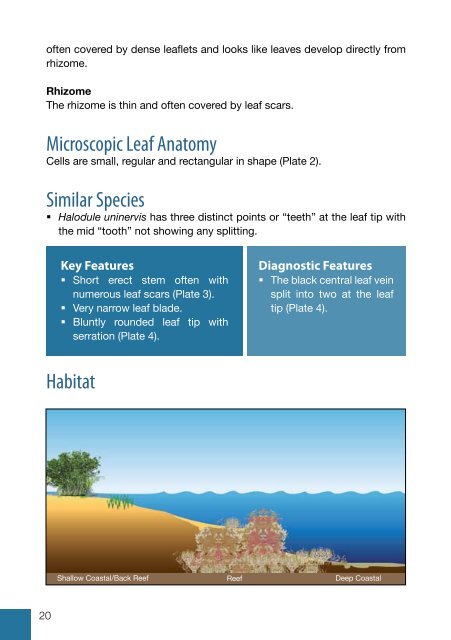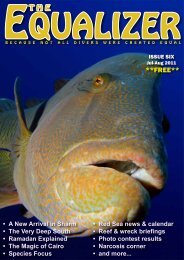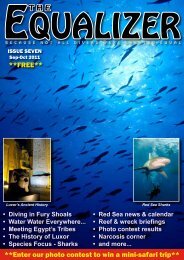Field Guide to Seagrasses of the Red Sea - Seagrass-Watch
Field Guide to Seagrasses of the Red Sea - Seagrass-Watch
Field Guide to Seagrasses of the Red Sea - Seagrass-Watch
You also want an ePaper? Increase the reach of your titles
YUMPU automatically turns print PDFs into web optimized ePapers that Google loves.
<strong>of</strong>ten covered by dense leaflets and looks like leaves develop directly from<br />
rhizome.<br />
Rhizome<br />
The rhizome is thin and <strong>of</strong>ten covered by leaf scars.<br />
Microscopic Leaf Ana<strong>to</strong>my<br />
Cells are small, regular and rectangular in shape (Plate 2).<br />
Similar Species<br />
• Halodule uninervis has three distinct points or “teeth” at <strong>the</strong> leaf tip with<br />
<strong>the</strong> mid “<strong>to</strong>oth” not showing any splitting.<br />
Key Features<br />
• Short erect stem <strong>of</strong>ten with<br />
numerous leaf scars (Plate 3).<br />
• Very narrow leaf blade.<br />
• Bluntly rounded leaf tip with<br />
serration (Plate 4).<br />
Diagnostic Features<br />
• The black central leaf vein<br />
split in<strong>to</strong> two at <strong>the</strong> leaf<br />
tip (Plate 4).<br />
Habitat<br />
Shallow Coastal/Back Reef<br />
Reef<br />
Deep Coastal<br />
20





